Software development methodologies provide a structured approach to designing, building, and deploying software, ensuring quality and collaboration throughout the software development process. These methodologies streamline workflows, helping teams maintain focus on project requirements, deliver a reliable final product, and meet business needs efficiently. Teams often rely on these methods to ensure consistency and maintain software quality assurance, even in complex or high-stakes projects.
At Aloa, we simplify software development practices through a robust project management framework. Our development team consists of highly vetted partners who excel in implementing the most popular software development methodologies, from agile development to traditional software development approaches. A dedicated product owner ensures every software development project aligns with your business needs and follows the best software engineering practices. Aloa focuses on driving customer feedback, risk management, and delivering exceptional results tailored to your goals.
Given our comprehensive analysis of different software development methodologies, this guide thoroughly explores their key features and practical applications. By the end of this blog, you'll gain insights into the software development life cycle, choosing the right development model, and improving your product development approach with structured methodologies.
Let's get started!
What Are Software Development Methodologies?
Software development methodologies are structured approaches designed to plan, execute, and manage software projects efficiently. These software methodologies organize different teams, meet deadlines, and deliver a high-quality software product. Adopting the right software development methodology enhances collaboration within the software development team, boosts customer satisfaction, and achieves project goals.
Here are the factors to consider when choosing a methodology:
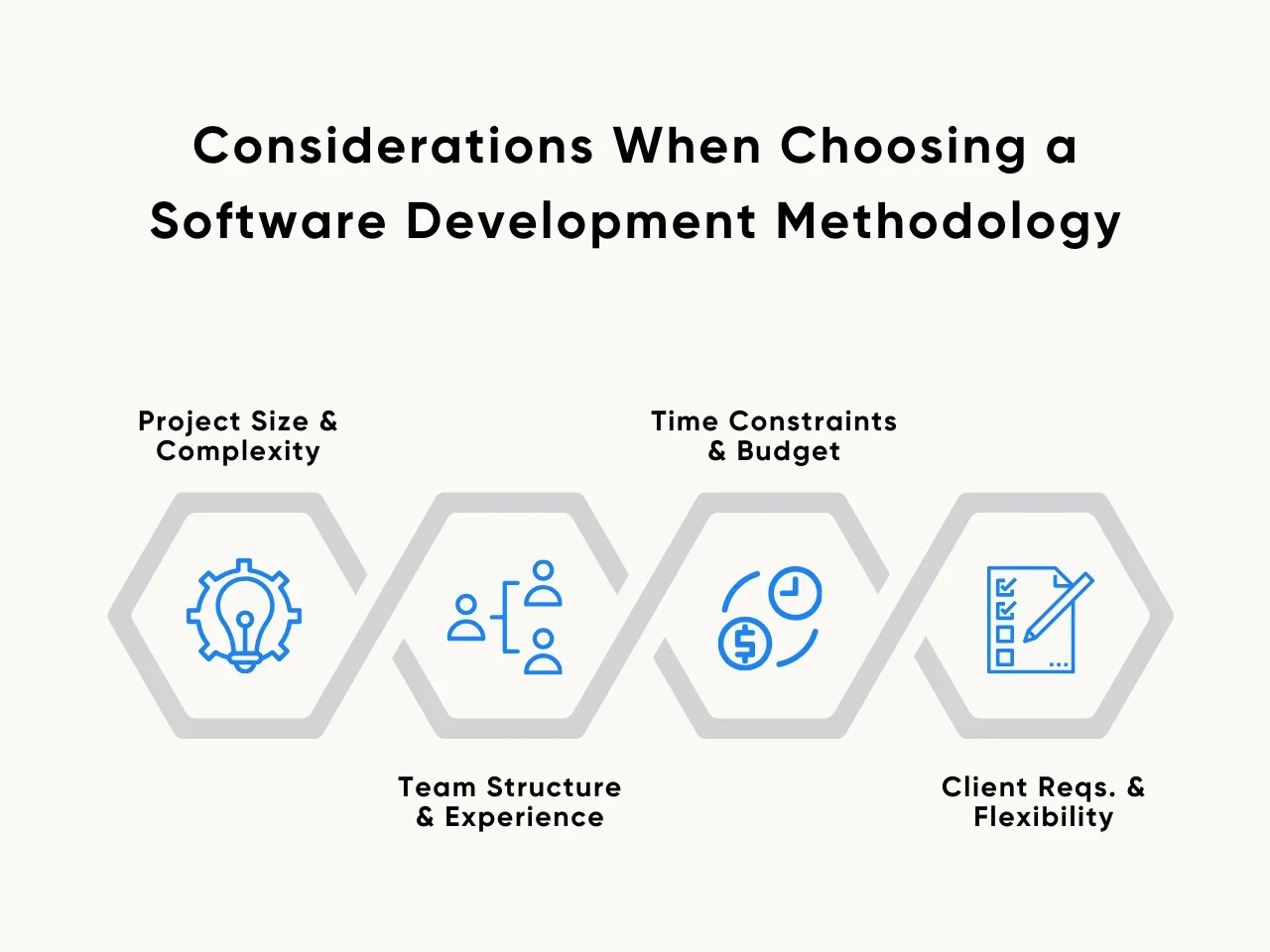
- Project Size and Complexity: Larger software projects benefit from frameworks like the spiral model or agile methodologies, as these emphasize risk analysis and adaptability.
- Team Structure and Experience: Skilled team members work effectively with flexible frameworks. Less experienced teams may prefer the waterfall model or dynamic systems development for their structured, iterative approach.
- Time Constraints and Budget: Fast-paced projects benefit from rapid application development or lean development because they focus on speed and brief planning.
- Client Requirements and Flexibility Needs: Highly iterative models, such as extreme programming or scrum development, accommodate changes in later stages, ensuring alignment with evolving client needs.
Choosing the best software development methodologies requires evaluating development tools, project goals, and the cons of each methodology. A tailored approach ensures the software project meets expectations while fostering collaboration across different teams.
Top 10 Software Development Methodologies
Choosing the right software development methodology is crucial for project success, as it defines workflows, collaboration, and delivery timelines. With various methodologies tailored to different needs, understanding their strengths is essential. Let's explore the top 10 methodologies, helping you select the best approach for efficient, high-quality software development.
1. Agile Development
Agile Development is one of the most widely used software development methodologies. This approach emphasizes iterative processes that promote collaboration, adaptability, and continuous improvement. Agile empowers teams to respond quickly to changing requirements, ensuring projects remain aligned with evolving goals. Teams often track their performance and optimize delivery using tools like a dora metrics dashboard, fostering a close connection between developers and stakeholders and resulting in a more efficient development cycle and higher-quality outcomes.
Key Features of Agile Development
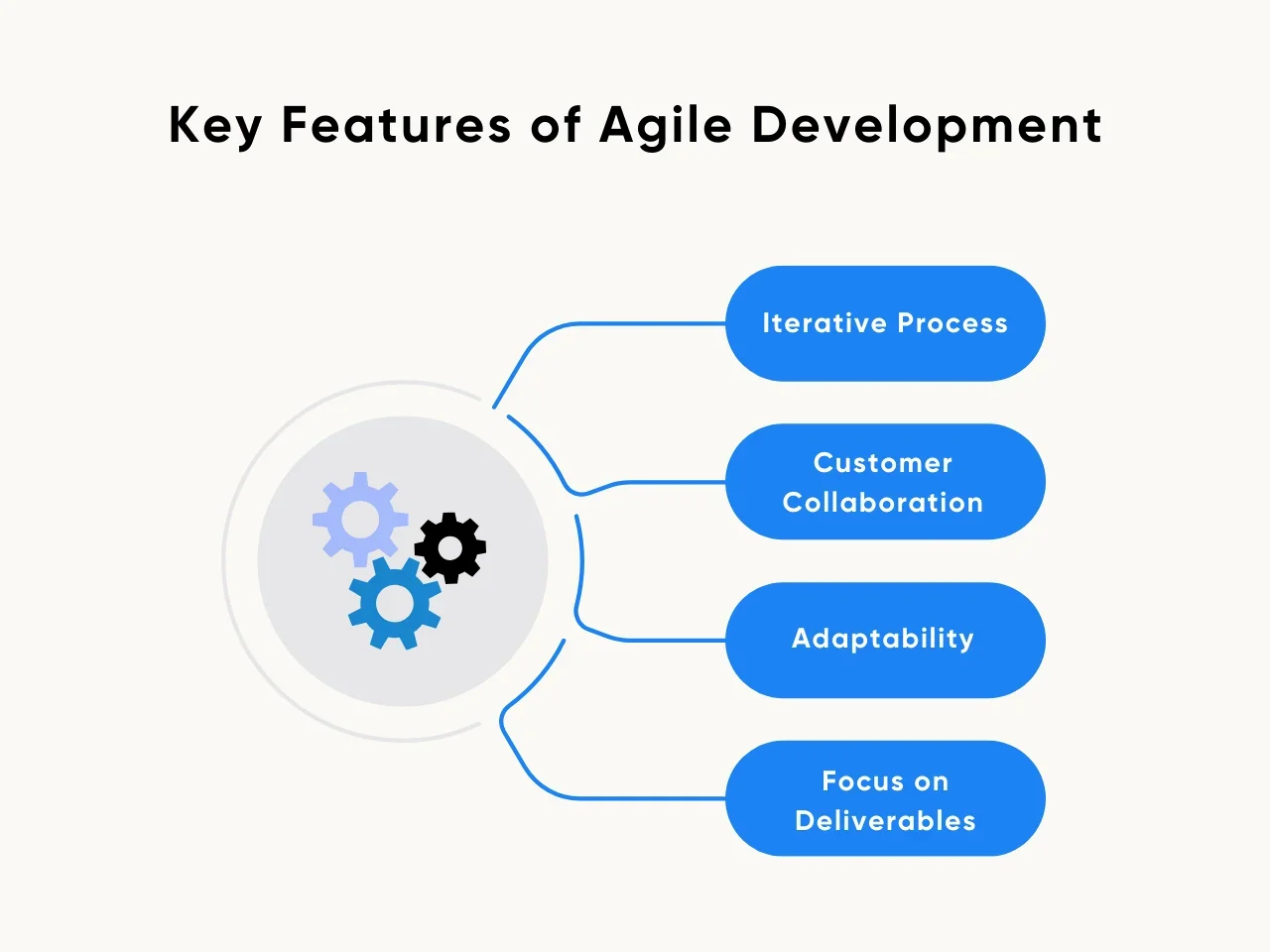
- Iterative Process: Agile focuses on breaking the project into smaller cycles or iterations, allowing teams to make incremental progress.
- Customer Collaboration: It encourages constant communication with clients, ensuring feedback shapes the product throughout development.
- Adaptability: Agile thrives in dynamic environments, enabling teams to pivot when new requirements emerge.
- Focus on Deliverables: Each iteration concludes with a tangible deliverable, keeping the team accountable and stakeholders informed.
Agile is ideal for projects requiring flexibility and regular updates. Teams working on evolving software or applications benefit greatly from this approach. Its frameworks, such as Scrum and Kanban, suit organizations seeking structured processes that adapt to fast-changing needs. Agile ensures seamless progress and alignment with client expectations.
2. Waterfall Model
The Waterfall Model is one of the most traditional software development methodologies. It follows a linear, sequential process where each phase must be completed before the next begins. This method ensures clarity and organization, making it a preferred choice for projects with clear and stable requirements. Teams using the Waterfall Model benefit from detailed planning, consistent progress tracking, and structured workflows.
Key Features of the Waterfall Model
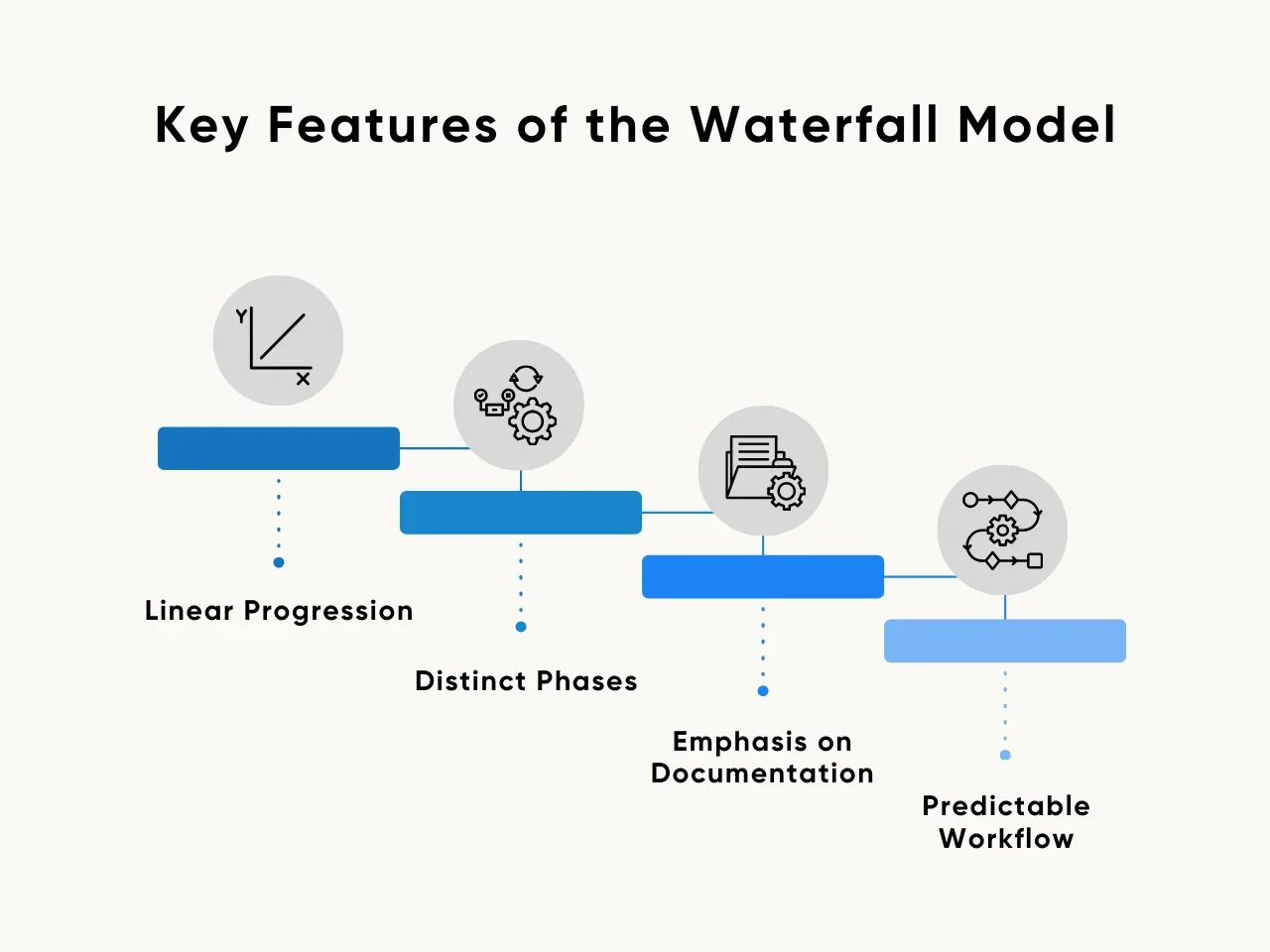
- Linear Progression: The Waterfall Model follows a straightforward path, sequentially moving from one stage to the next. This structure eliminates overlap and keeps tasks organized.
- Distinct Phases: Development progresses through clearly defined stages—requirements, design, implementation, testing, and deployment. Each phase serves as a foundation for the next.
- Emphasis on Documentation: Comprehensive documentation ensures all team members understand the project scope, deliverables, and processes, creating consistency throughout development.
- Predictable Workflow: With its fixed structure, the Waterfall Model allows teams to forecast timelines and resources, ensuring projects stay on track.
The Waterfall Model suits projects with well-defined requirements and minimal changes. It works effectively for scenarios where clarity, predictability, and strict timelines are essential, such as government contracts or enterprise-level systems with established goals.
3. Scrum
Scrum is a dynamic framework under the Agile umbrella that emphasizes teamwork, accountability, and iterative progress. This methodology divides development into short, focused sprint cycles, promoting incremental improvements. Scrum’s collaborative nature fosters effective communication and quick adaptation, ensuring projects align closely with evolving goals. Its structured approach provides teams with a clear roadmap for delivering high-quality software.
Key Features of Scrum
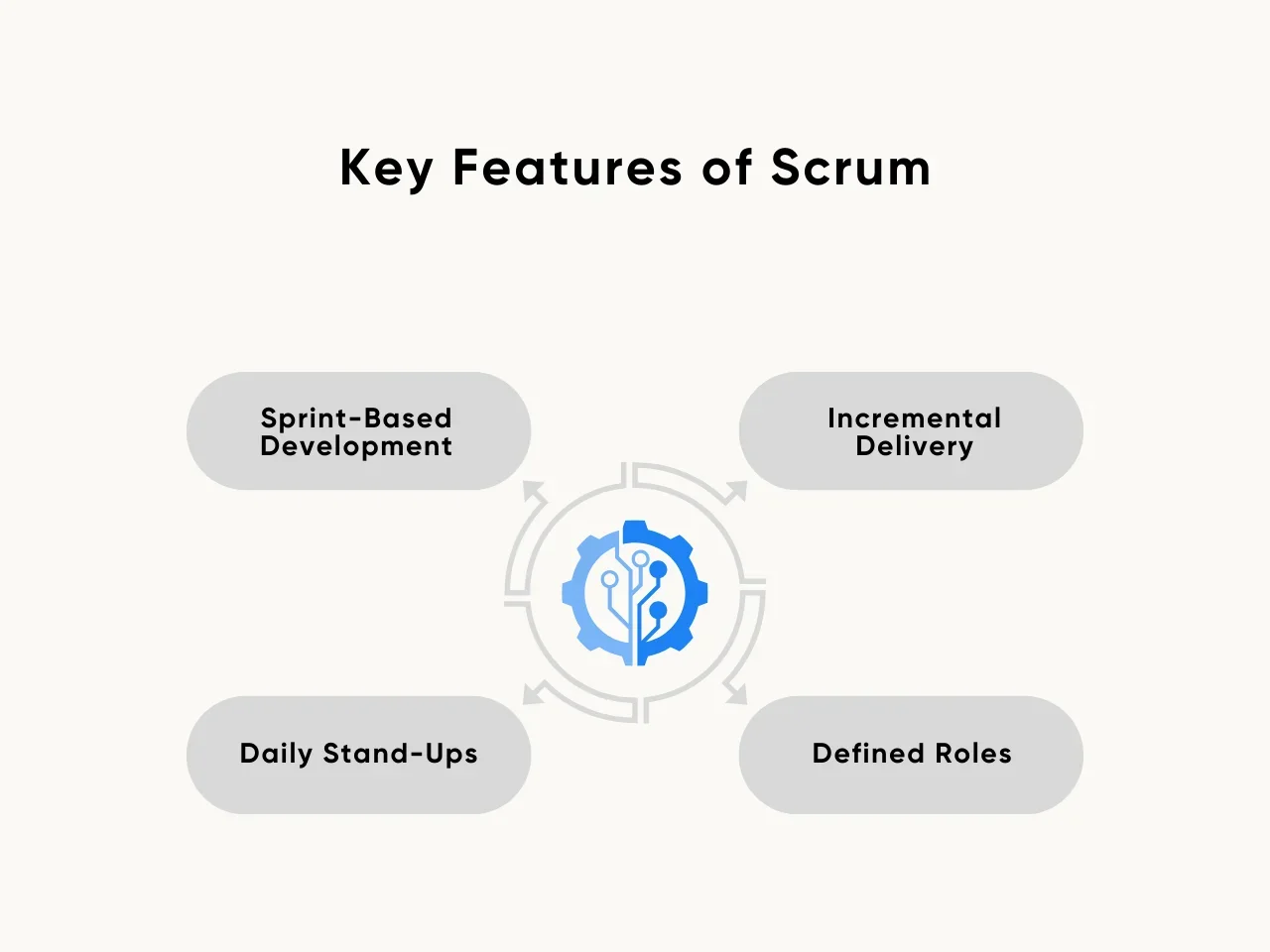
- Sprint-Based Development: Scrum operates in time-boxed iterations called sprints, typically lasting 2-4 weeks. Each sprint concludes with a review, ensuring steady progress and measurable outcomes.
- Daily Stand-Ups: Teams hold brief daily meetings to discuss progress, address challenges, and plan tasks. This practice promotes transparency and keeps everyone aligned.
- Incremental Delivery: Work is broken down into manageable increments, allowing teams to deliver functional parts of the product throughout the development process.
- Defined Roles: Scrum designates responsibilities, including the Scrum Master, Product Owner, and Development Team. This clarity ensures accountability and smooth collaboration.
Scrum works best for teams seeking a structured yet flexible framework for iterative development. It’s particularly effective in environments that require frequent updates, close teamwork, and a clear division of roles. Its adaptability makes it ideal for dynamic projects where feedback and incremental improvements are critical.
4. Kanban
Kanban offers a straightforward yet effective approach to software development, prioritizing visual task management and process optimization. This methodology enables teams to track progress, identify bottlenecks, and make real-time adjustments to improve workflow. Kanban encourages continuous delivery, making it a preferred choice for teams seeking clarity and efficiency in their projects.
Key Features of Kanban
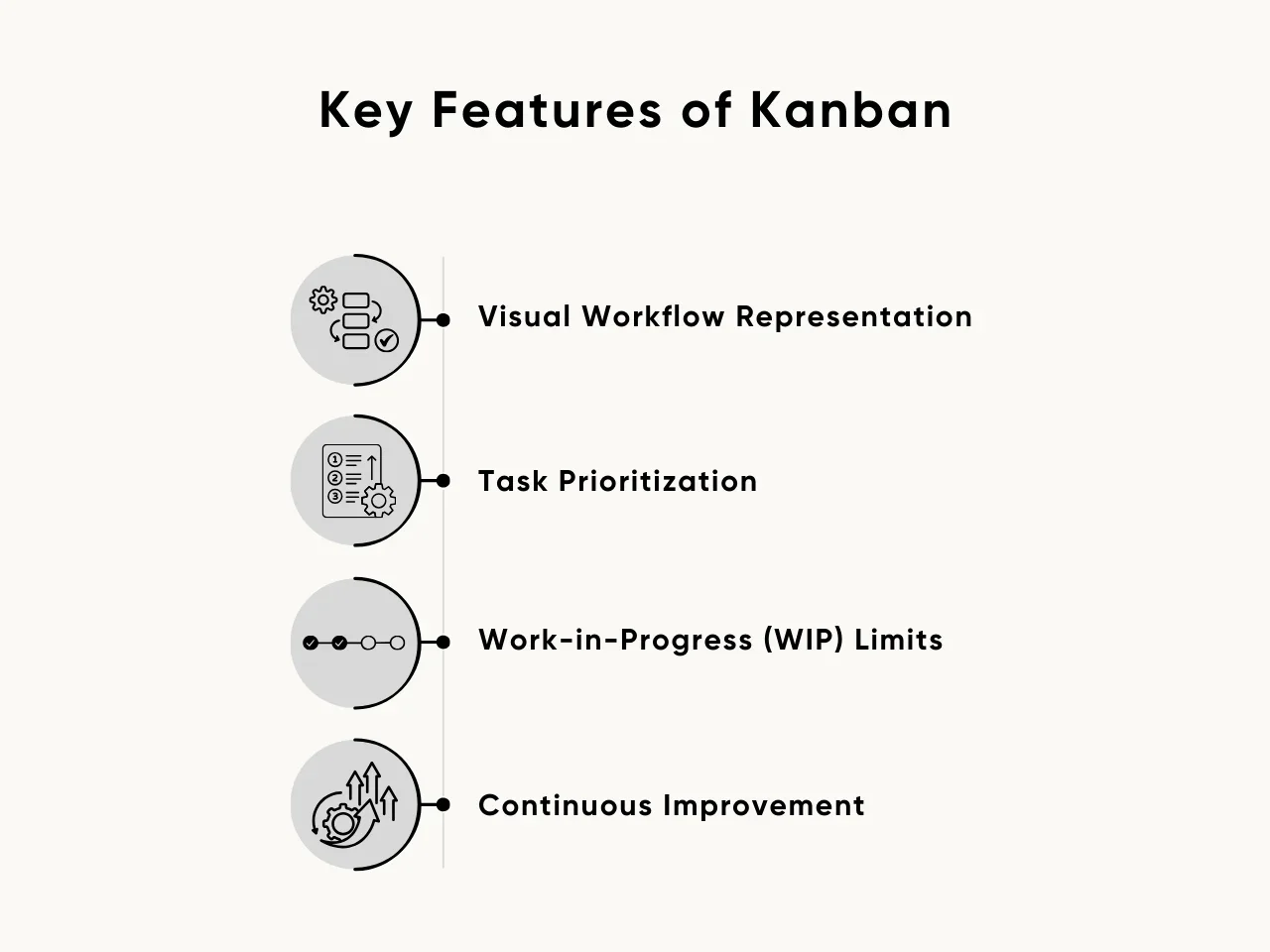
- Visual Workflow Representation: Kanban boards with columns and cards to represent tasks, making it easy to visualize the entire workflow at a glance. This approach enhances team coordination and helps identify issues promptly.
- Task Prioritization: Teams organize tasks based on priority and deadlines, ensuring the most critical work moves through the process efficiently.
- Work-in-Progress (WIP) Limits: Kanban limits the number of tasks in progress at any stage, preventing teams from being overwhelmed and ensuring quality over quantity.
- Continuous Improvement: The methodology encourages teams to evaluate workflows regularly, identifying areas for refinement to achieve greater efficiency and productivity over time.
Kanban suits teams focused on improving process efficiency and eliminating bottlenecks. Its flexibility works well in small and large projects, particularly when goals and priorities frequently shift. Kanban proves highly effective for teams aiming to enhance productivity through structured task management.
5. Lean Development
Lean Development is a methodology that emphasizes efficiency and value creation by eliminating wasteful processes. It focuses on delivering only what is essential to meet customer needs, ensuring faster delivery times and optimal resource utilization. Teams adopting Lean Development streamline workflows, prioritize high-value features, and continually refine their processes for better outcomes. A practical approach within Lean Development is conducting Gemba Walks—direct observations of work processes to identify inefficiencies and areas for improvement. For a comprehensive guide, check out these Gemba Walk questions to help you implement this practice effectively.
Key Features of Lean Development

- Waste Reduction: Lean Development identifies and removes non-essential activities or tasks, ensuring the team’s efforts contribute directly to the project’s goals.
- Customer-Centric Approach: This methodology prioritizes delivering features that provide immediate value to the customer, ensuring the end product meets user expectations.
- Continuous Improvement: Teams regularly evaluate their processes to identify areas for refinement, fostering a culture of ongoing learning and optimization.
- Rapid Delivery: Lean emphasizes short development cycles to deliver functional elements, enabling faster feedback and iteration.
Lean Development is a strong choice for startups or teams with limited resources. Its focus on efficiency and essential features makes it ideal for projects with tight budgets and deadlines, ensuring maximum value is delivered without unnecessary complexity.
6. DevOps
DevOps is a transformative software development methodology emphasizing collaboration between development and operations teams. This methodology fosters a culture of shared responsibility, streamlining processes to deliver software rapidly and reliably. With automation at its core, DevOps integrates continuous development, testing, and deployment, ensuring seamless workflows and consistent delivery of high-quality software.
Key Features of DevOps
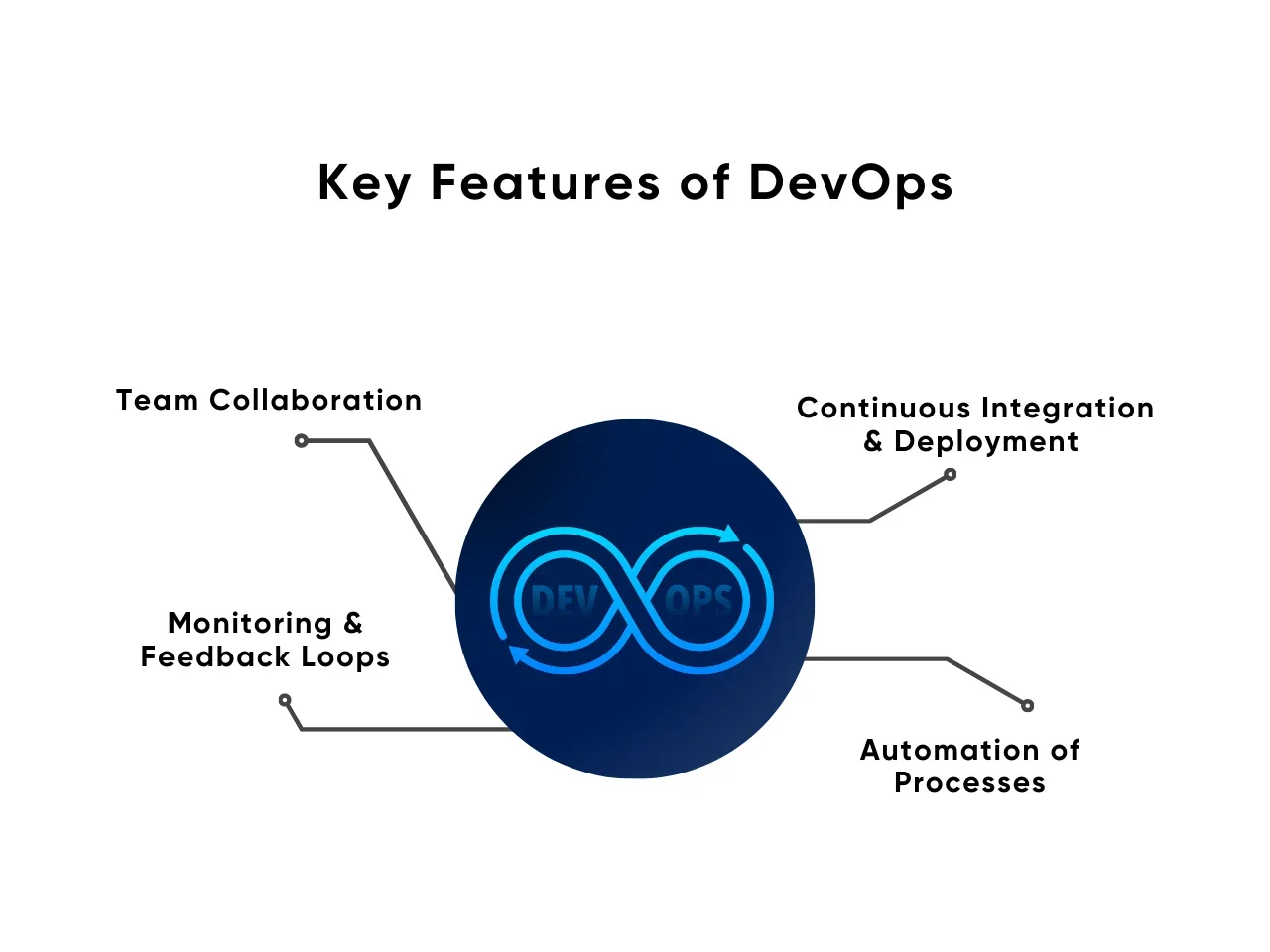
- Collaboration Between Teams: DevOps bridges the gap between development and operations, promoting joint accountability and communication to improve efficiency. This alignment enhances productivity and reduces delays.
- Continuous Integration and Deployment (CI/CD): DevOps automates the software lifecycle, ensuring that code is regularly integrated, tested, and deployed to production with minimal manual intervention.
- Automation of Processes: Routine tasks, such as testing, building, and deployment, are automated to reduce errors, save time, and maintain consistency across releases.
- Monitoring and Feedback Loops: DevOps incorporates real-time monitoring and feedback mechanisms to identify issues early and implement solutions promptly, enhancing system reliability.
DevOps is ideal for projects demanding rapid delivery, frequent updates, and close collaboration between development and IT teams. Its ability to integrate automation and foster teamwork makes it especially suited for large-scale projects or organizations transitioning to continuous delivery practices.
7. Extreme Programming (XP)
Extreme Programming (XP) enhances software quality while maintaining flexibility. It emphasizes close collaboration between developers and customers, enabling rapid adjustments to meet changing requirements. XP encourages frequent releases, ensuring that new features and updates are delivered consistently. This methodology suits projects where technical excellence and fast feedback are crucial.
Key Features of Extreme Programming (XP)
.webp)
- Focus on Technical Excellence: XP prioritizes writing high-quality code through practices like pair programming and test-driven development. This ensures reliability and maintainability.
- Frequent Releases: Development progresses in small iterations, allowing teams to deliver functional updates quickly and consistently. This keeps the project moving forward and stakeholders engaged.
- Customer Collaboration: XP involves continuous interaction with the customer, ensuring their needs are understood and integrated throughout the development process.
- Responsive to Change: Teams can efficiently adapt to feedback and evolving requirements, making XP ideal for projects where flexibility is necessary.
Extreme Programming suits teams aiming for high-quality code and quick iterations. It works particularly well in fast-paced environments where customer feedback and technical rigor drive development. XP is perfect for projects demanding both adaptability and precision.
8. Spiral Model
The Spiral Model integrates iterative processes with a strong focus on risk assessment. This approach cycles through phases like planning, risk evaluation, development, and testing, allowing teams to address uncertainties early in the project. The methodology suits projects with high stakes or undefined requirements, ensuring controlled progress through each cycle.
Key Features of the Spiral Model

- Cyclic Development: The Spiral Model repeats its stages in multiple cycles, refining the product with each iteration. This approach enables ongoing improvements and adjustments.
- Risk Assessment: Each cycle includes a dedicated risk evaluation phase, allowing teams to identify, analyze, and mitigate potential issues before they impact the project.
- Iterative Refinement: The model emphasizes refining the product incrementally, addressing feedback and risks at every stage. This results in a more robust and well-aligned final product.
- Flexible Scope: Unlike linear methods, the Spiral Model accommodates changes, making it adaptable to evolving requirements and stakeholder feedback.
The Spiral Model is ideal for large, complex projects with high levels of uncertainty or significant risk factors. Industries like aerospace, defense, and healthcare often use this methodology to ensure comprehensive risk management while maintaining iterative progress. Its flexibility and focus on quality make it a preferred choice for mission-critical projects.
9. Rapid Application Development (RAD)
Rapid Application Development (RAD) is not as widely used today, as it has been integrated into modern frameworks like Agile development and low-code/no-code platforms. In contrast, commonly used approaches for software development agencies include Agile and Scrum, DevOps, and low-code/no-code platforms. RAD reduces time spent on upfront planning, allowing teams to adapt quickly to changes. Its iterative and customer-focused approach ensures that the final product aligns closely with user needs.
Key Features of Rapid Application Development (RAD)
.webp)
- Prototyping Focus: RAD emphasizes building functional prototypes early in the process. These prototypes provide a tangible representation of the final product, enabling stakeholders to give actionable feedback.
- User-Centric Approach: Continuous collaboration with users ensures the software meets their expectations. Frequent feedback drives iterative improvements throughout development.
- Minimized Planning: RAD reduces time spent on rigid planning phases, allocating more resources to development and design, accelerating the project timeline.
- Flexibility in Design: Teams can modify designs and features dynamically, making RAD ideal for projects with evolving requirements or uncertain specifications.
RAD suits projects that demand rapid delivery and constant user interaction. It works well for smaller teams or businesses developing applications where customer feedback is crucial in shaping the final product. This methodology is particularly effective for web and mobile app development, where adaptability and speed are critical.
10. Feature-Driven Development (FDD)
Feature-Driven Development (FDD) prioritizes delivering tangible results through feature-focused design and implementation. This model-driven approach breaks the development process into smaller, manageable features, ensuring consistent progress and measurable outcomes. FDD emphasizes simplicity and practicality, making it a preferred choice for teams working on feature-rich projects.
Key Features of Feature-Driven Development (FDD)
.webp)
- Feature-Centric Approach: FDD organizes the development process around features—small, functional components of the final product. This ensures a clear focus on delivering user-centric results.
- Short Iterations: Development occurs in concise cycles, allowing teams to complete and deliver features incrementally. This keeps the project dynamic and adaptable to feedback.
- Model-Driven Design: FDD relies on upfront modeling to comprehensively understand the project. This phase ensures clarity in requirements and aligns the team on objectives.
- Team Collaboration: Roles and responsibilities are clearly defined in FDD, encouraging seamless collaboration among developers, project managers, and stakeholders.
FDD suits teams developing feature-heavy applications like e-commerce platforms or content management systems. Its structured yet flexible approach ensures steady progress while accommodating evolving client needs, making it ideal for large-scale or complex software projects.
Key Takeaway
Selecting the right software development methodologies is crucial to achieving successful project outcomes. These methodologies offer structured approaches that streamline workflows, enhance collaboration, and ensure high-quality deliverables. Each methodology caters to specific project needs, team dynamics, and client requirements. Understanding their unique advantages enables better decision-making for your software projects.
When selecting a methodology, consider key factors such as the size and complexity of your project, the skills and experience of your team, and the level of customer involvement required. Each project has unique demands, so assessing these factors ensures that your chosen software development methodologies fit your needs. A well-matched methodology minimizes risks, optimizes resource allocation, and supports your development goals.
Which software development methodology fits your project? At Aloa, we deliver exceptional software solutions through tailored methodologies designed for optimal results. With expertise in managing diverse projects, Aloa supports your team at every step. Explore our services today to transform your software development journey into a seamless experience.

